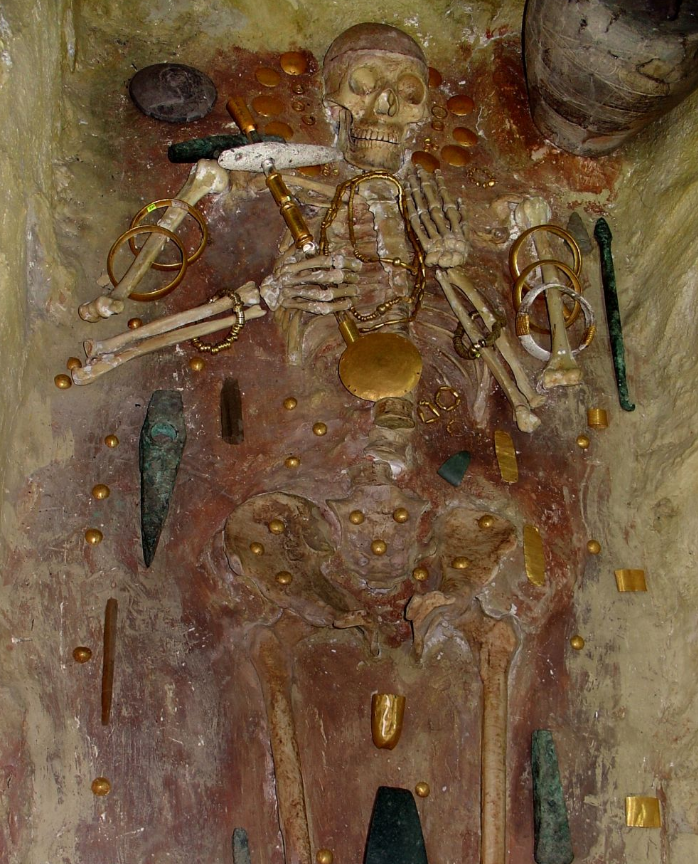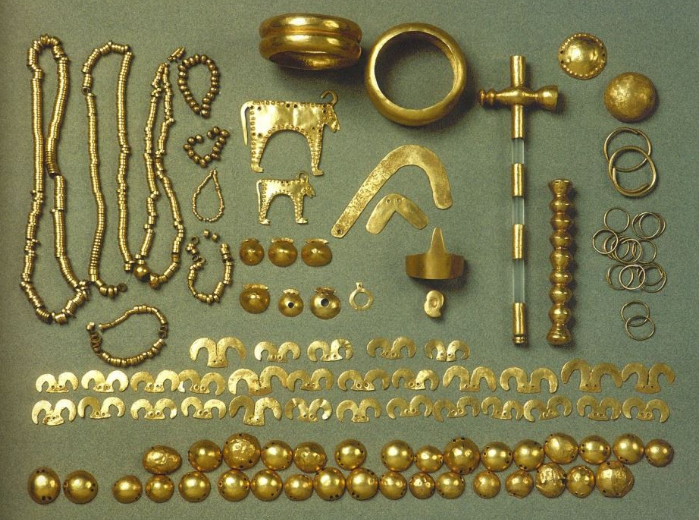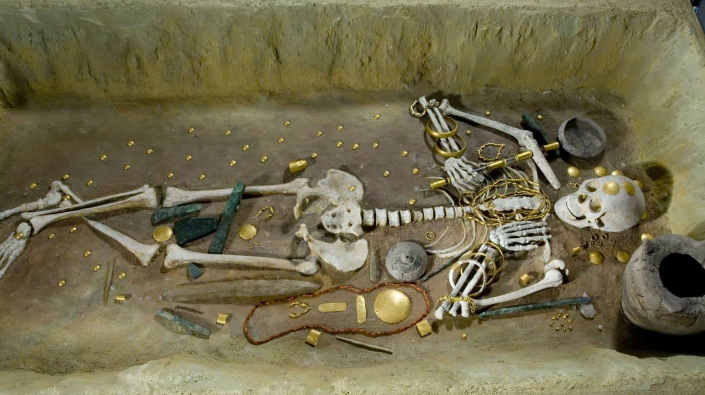“Oldest Gold of Humankind” Found in Varna Necropolis Was Buried 6,500 Years Ago
In the captivating realm of prehistory, the Varna Necropolis emerges as an internationally renowned archaeological site. Located on the Bulgarian coast of the Black Sea, this vast burial ground, also known as the Varna Cemetery, holds a significant place in human history, dating back to the Chalcolithic (Copper Age) Varna Culture that thrived approximately 6,000-6,500 years ago.
With a staggering total of 294 graves discovered thus far, the Varna Necropolis has yielded around 3,000 gold artifacts, making it an extraordinary testament to the past. Amidst the numerous elite burial sites, one grave, in particular, stands out—the enigmatic Grave 43. Within its confines, archaeologists unearthed the remains of a high-status male, believed to have been a ruler or prominent leader.
The accidental discovery of the Varna Gold Treasure in 1972 added to the mystique surrounding this ancient site. During the construction of a canning factory, a young excavator operator named Raycho Marinov stumbled upon several artifacts, which he collected in a shoebox and took home. Recognizing their significance, he subsequently contacted local archaeologists to report the find.
These astonishing treasures are the enduring legacy of an ancient European civilization that flourished during the Neolithic and Chalcolithic periods in present-day Bulgaria, the Balkan Peninsula, the Lower Danube region, and the West Black Sea coast. Referred to as “Old Europe” by some scholars, this prehistoric civilization left behind artifacts that bear witness to their trade relations with distant Black Sea and Mediterranean regions. For instance, it is believed that the Varna Culture exported rock salt from the Provadiya-Solnitsata (“The Salt Pit”) mine. The presence of Mediterranean mollusk shells, specifically Spondylus, found in the graves of the Varna Necropolis and other Chalcolithic sites in Northern Bulgaria, suggests that they may have served as a form of currency.
The wealth of gold artifacts discovered in several graves indicates that the Balkan Peninsula already exhibited some form of statehood and a royal institution during the Copper Age. One such remarkable inventory was unearthed in Grave 43, revealing the final resting place of a male aged 40-45, of considerable stature for that era. With over 1.5 kilograms of gold artifacts discovered in his grave, archaeologists speculate that he held a prominent position in his community, possibly that of a ruler or king-priest. Among the treasures were 10 large appliques, numerous rings, necklaces, beads, a phallic-shaped item, gold decorations for a bow, a stone ax, a copper ax adorned with gold, and a bow with gold applications.
In Grave 36, which held symbolic significance, archaeologists found over 850 gold items, including a tiara, earrings, a necklace, a belt, bracelets, a breastplate, a gold hammer-scepter, a gold model of a sickle, two gold lamellas depicting animals, and 30 models of horned animal heads. The objects were discovered draped with a gold-laced cloth, meticulously arranged to outline the shape of a human body, indicating a male burial. These golden artifacts were interpreted as royal insignia by the archaeologists.
Similar “royal” burials have been uncovered in graves 1, 4, and 5 of the Varna Chalcolithic Necropolis, further attesting to the existence of an ancient hierarchical society. The site itself, despite being partially excavated, holds immense potential for further discoveries, with approximately 30% of its estimated territory remaining unexplored.
The treasures from the Varna Necropolis not only provide insight into a bygone era but also shed light on the transformative shift from a matriarchal to a patriarchal society. Many of the artifacts celebrate the role of the smith as a creator, replacing the Great Mother Goddess and establishing metal as a symbol of status rather than just an economic resource.
As we marvel at these remnants of a distant past, we recognize the importance of the Varna Necropolis as a gateway to understanding the complex tapestry of human civilization. It stands as a testament to the achievements, beliefs, and customs of a long-lost era, waiting to reveal more secrets as future excavations unfold.
Hits: 0







